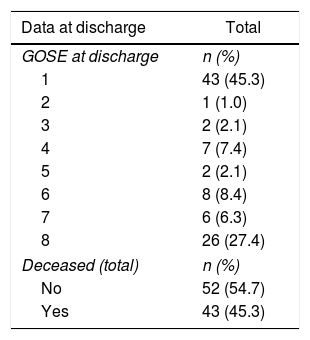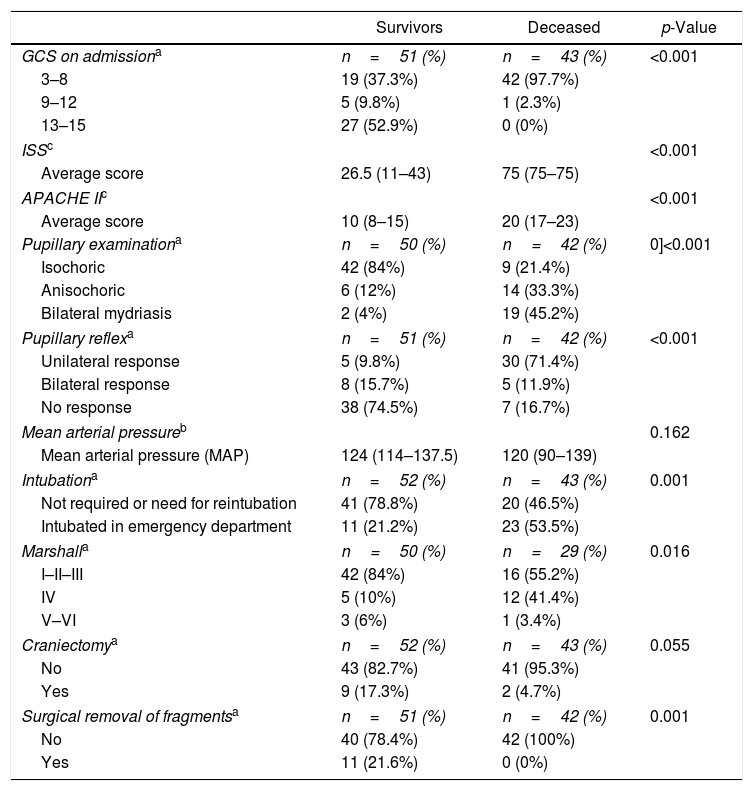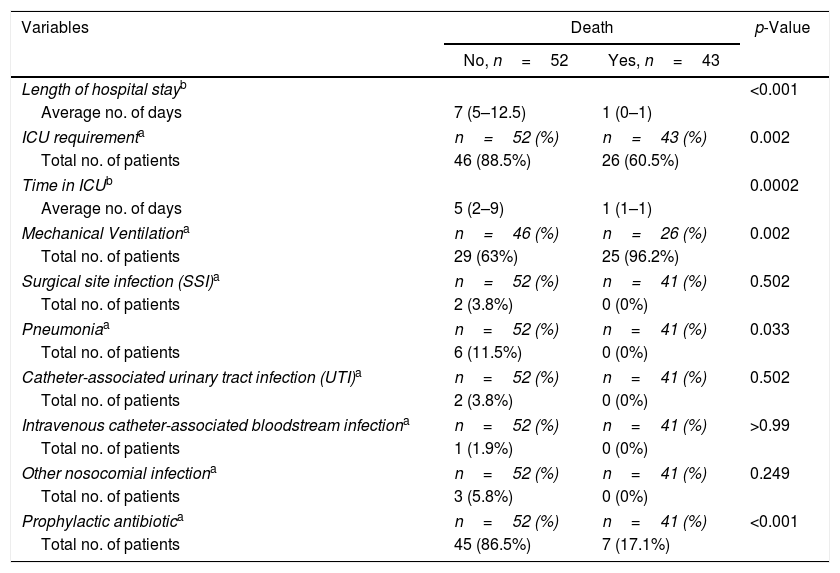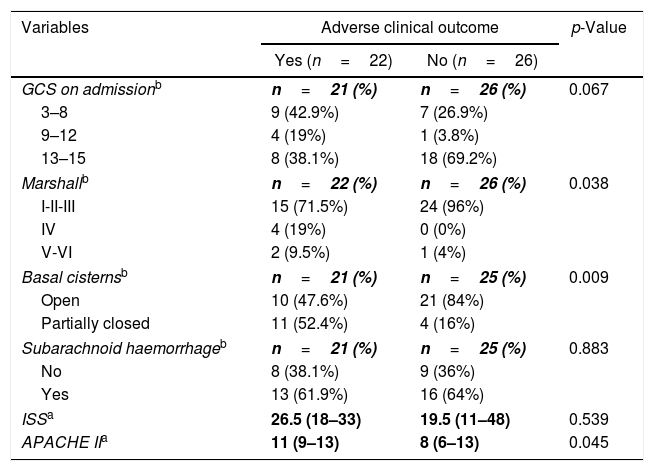This study aims to describe cases of traumatic brain injury due to gunshot wounds in civilian population over 18 years of age, treated at a referral hospital in Cali, Colombia and compare the clinical outcomes at discharge.
MethodsAn observational, descriptive cross-sectional study was conducted by retrospectively collecting clinical data related to adult patients that presented traumatic brain injury due to civil gunshot-wounds and that consulted to the emergency room at Fundación Valle del Lili Hospital in Cali, Colombia between January 2010 and February of 2016. A univariate analysis was performed to determine factors associated with death and adverse clinical outcomes.
ResultsA total of 95 patients older than 18 years, with traumatic brain injury by gunshot were included in the civil context. The 91.6% were male. The main context was interpersonal violence with 54.7%. The most common method of transportation was by ambulance (79%). The Glasgow score at admission was 3–8 in 64.2% of cases; 9–12 in 6.32% and 13–15 in 28.4%. On admission, head CT scan was performed in 82 (86.3%) patients within the first hour, finding a Marshall-Score between I–III in 60.9%, of IV in 17.8% of cases and a score between V–VI and in 4.1%. The trajectory was non-transfixing penetrating in 43.2%, transfixing in 27.3% and tangential in 9.5%. Mortality was 45.3% in total, 39% died within the first 24h.
ConclusionsA major compromise on admission determines an overall poorer prognosis and a high likelihood of death in the first 24-h.
Este estudio busca describir casos de trauma craneoencefálico debido a heridas por proyectil de arma de fuego, en población civil mayor de 18 años, atendidos en un hospital de referencia y realizar una comparación de los pacientes de acuerdo a los resultados clínicos al egreso.
MétodosSe trata de un estudio descriptivo, observacional, retrospectivo a través de la revisión de historias clínicas de los pacientes mayores de 18 años que ingresaron en la sala de urgencias de la Fundación Valle del Lili en Cali, Colombia con trauma craneoencefálico secundario a heridas por proyectil de arma de fuego, en contexto civil, entre enero del 2010 y febrero del 2016. Se realizó un análisis univariado para determinar factores asociados a muerte y resultados clínicos adversos.
ResultadosSe incluyó un total de 95 pacientes con trauma craneoencefálico por heridas por proyectil de arma de fuego en el contexto civil. El 91,6% fue de sexo masculino, el principal contexto fue violencia interpersonal en un 54,7%, el método de transporte más común fue ambulancia terrestre en un 79%, el puntaje de Glasgow (GCS) al ingreso fue 3-8=64,2%; 9-12=6,3%; 13-15=28,4%. Al ingreso se le tomó TAC simple a 82 (86,3%) pacientes dentro de la primera hora, encontrando una clasificación de Marshall entre I-III en 60,9%, un valor de IV en el 17,8% y entre V-VI en un 4,1%. La trayectoria era penetrante no transfixiante en el 43,2%, transfixiante en el 27,4% y tangencial en el 9,5%. La mortalidad fue del 45,3%, de esta 39% ocurrió en las primeras 24h.
ConclusionesUn mayor compromiso en el estado general del paciente al ingreso determina un pobre pronóstico y mayor probabilidad de muerte en las primeras 24h.
Article

If it is the first time you have accessed you can obtain your credentials by contacting Elsevier Spain in suscripciones@elsevier.com or by calling our Customer Service at902 88 87 40 if you are calling from Spain or at +34 932 418 800 (from 9 to 18h., GMT + 1) if you are calling outside of Spain.
If you already have your login data, please click here .
If you have forgotten your password you can you can recover it by clicking here and selecting the option ¿I have forgotten my password¿.












